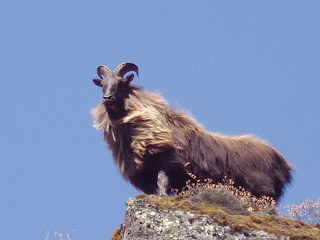Total Area : 1500 sq km.
Buffer Zone : 830 sq km.
Activities : Trekking, Mountaineering
Accommodation : Resort hotels, Lodges, Camping
Access : Fly to Tumlingtar from kathmandu (40 minutes and six days walk)
Best Season : Oct-Nov and Mar-April
&
Recent Updates
Showing posts with label National Parks. Show all posts
Showing posts with label National Parks. Show all posts
National Parks

Sagarmatha National Park

Total Area : 1148 sq km.
Buffer Zone : 275 sq km.
Activities : Trekking, Mountaineering, Experiance of sherpa culture
Accommodation : Resort hotels, Lodges, Camping
Access : Fly to Lukla which is 30 minutes by air from kathmandu.
Labels:
National Parks










